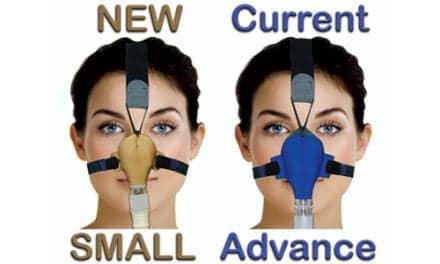The Department of Veterans Affairs (VA) is proposing changes to the VA Schedule for Rating Disabilities pertaining to the respiratory system.
“Veterans who currently receive compensation for a service-connected condition in these body systems will not have their disability rating impacted when the VA Schedule for Rating Disabilities is updated,” says Thomas Murphy, Northeast district director, performing the delegable duties of the undersecretary for benefits, in a release. “Updating the rating schedule allows veterans to receive decisions based on the most current medical knowledge relating to their condition.”
Proposed updates include: “modernizing the evaluative rating criteria for sleep apnea, using developments in medical knowledge to evaluate it based on its responsiveness to treatment, bringing the rating criteria for sleep apnea more closely in line with the stated purpose of the rating schedule.”
According to VA’s proposed rule, as published on the Federal Register:
“VA proposes to extensively revise the rating criteria for sleep apnea to primarily provide compensation that is more compatible with earning impairment than the current criteria. The current criteria evaluate based upon treatment rather than actual impairment. VA currently assigns higher ratings to individuals when their physicians prescribe more intensive therapies, such as continuous airway pressure (CPAP) machines, without regard to whether individuals first tried more conservative therapies, such as weight loss or oral appliances, or what actual impairment continues following use of CPAP machines. As discussed below, VA’s proposed criteria will focus on the result rather than the type of treatment. Hence, individuals whose treatments are equally effective will receive equal disability ratings, regardless of the treatments. Individuals for whom treatment similarly fails (or is only partially effective) will also receive similar ratings. These proposed changes for sleep apnea comply with 38 U.S.C. 1155 that the VASRD ratings reflect average losses in earning capacity.
“Specifically, VA proposes to assign a 0 percent evaluation when sleep apnea syndrome is asymptomatic, with or without treatment. VA would assign a 10 percent evaluation when treatment yields “incomplete relief.” VA would assign ratings above 10 percent ( e.g., 50 and 100 percent) only when treatment is either ineffective or the veteran is unable to use the prescribed treatment due to comorbid conditions. VA would assign a 100 percent evaluation only if there is also end-organ damage. VA proposes to include an informational note that defines and gives examples of qualifying comorbid conditions, i.e., conditions that, in the opinion of a qualified medical provider, directly impede or prevent the use of, or implementation of, a recognized form of treatment intervention normally shown to be effective.”
Another proposal published in the same notice is the VA would like to add a new paragraph about respiratory conditions with comorbid cardiovascular conditions.
“Typically, when disability affects either the cardiovascular or respiratory systems, it is easy to apportion disability using METs [metabolic equivalents or the amount of oxygen consumed by a person at rest] to the affected system. However, when both the cardiovascular and respiratory systems are involved, it is difficult to apportion the contribution to the observed disability by each system. To avoid the potential rating complications posed by situations where coexistent cardiovascular and respiratory disabilities can be evaluated using METs, VA will instruct raters to evaluate only one body system using METs and evaluate the other body system using criteria other than METs, absent instructions otherwise in individual DCs. (The evaluation levels for METs will be the same in both cardiovascular and respiratory systems—that is, the METs yielding a 60 percent evaluation level in the cardiovascular system will yield the same evaluation in the respiratory system.) The General Rating Formula for Respiratory Conditions in § 4.97 lists several types of test results that can be used to evaluate a respiratory condition. When METs are used to evaluate a respiratory disability under § 4.97, they will not be used to evaluate a comorbid cardiovascular disability under § 4.104, and vice versa. Raters will use METs in the evaluation of the disability that would provide the veteran with the most advantageous combined rating.”
No change to a veteran’s current rating would occur due to these proposed changes. If the proposed changes are finalized, veterans who currently receive compensation for a service-connected condition can apply for increased compensation, but no reductions shall be made unless an improvement in the veteran’s disability is shown to have occurred.
The public has until April 18, 2022, to provide comments to the VA regarding the proposed updates.










